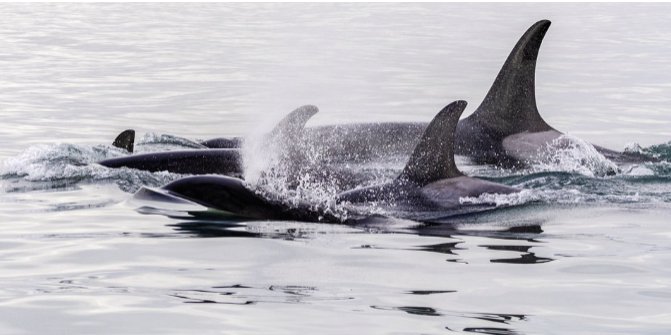Feeding habits of a new Arctic predator: insight from full-depth blubber fatty acid signatures of Greenland, Faroe Islands, Denmark, and managed-care killer whales Orcinus orca
New publication by Jennifer Bourque, Rune Dietz, Christian Sonne, Judy St. Leger, Sara Iverson, Aqqalu Rosing-Asvid, Martin Hansen, and Melissa A. McKinney.

Abstract:
An increasing number of North Atlantic killer whales Orcinus orca have recently been observed in sub-Arctic and Arctic seas. Within these regions, marine mammal consumption appears frequent relative to the more fish-based diet within traditional habitats. To provide insight into feeding habits of northward range-expanding killer whales, full-depth blubber fatty acid signatures from 21 free-ranging killer whales from southeast Greenland, Faroe Islands,and Denmark were compared to those of 4 managed-care killer whales, which were fed a constant, longterm fish diet. We analyzed the entire blubber layer in 10 equal-length subsections to evaluate how fatty acid stratification throughout blubber depth may influence fatty acid-based feeding evaluations. Specific fatty acid markers previously linked to marine mammal feeding in other killer whale populations were significantly higher in free-ranging killer whales relative to managed-care individuals, suggesting that marine mammals represent a time-integrated component of free-ranging killer whales’ diet. Unlike the managed-care whales, fatty acid signatures were highly variable among the free-ranging killer whales, suggesting that either they are generalists or exhibit inter-individual feeding variation. All samples, regardless of origin, showed stratification of fatty acid signatures through blubber layers. Dietary fatty acids generally occurred in higher proportions and were more variable in the innermost layers for the free-ranging whales. These data suggest that superficial blubber sampling through biopsy darting may not capture fine-scale and/or short-term variation in diet, and therefore the sampling approach should be carefully considered in research using fatty acids to evaluate feeding ecology of killer whales and other cetaceans.
